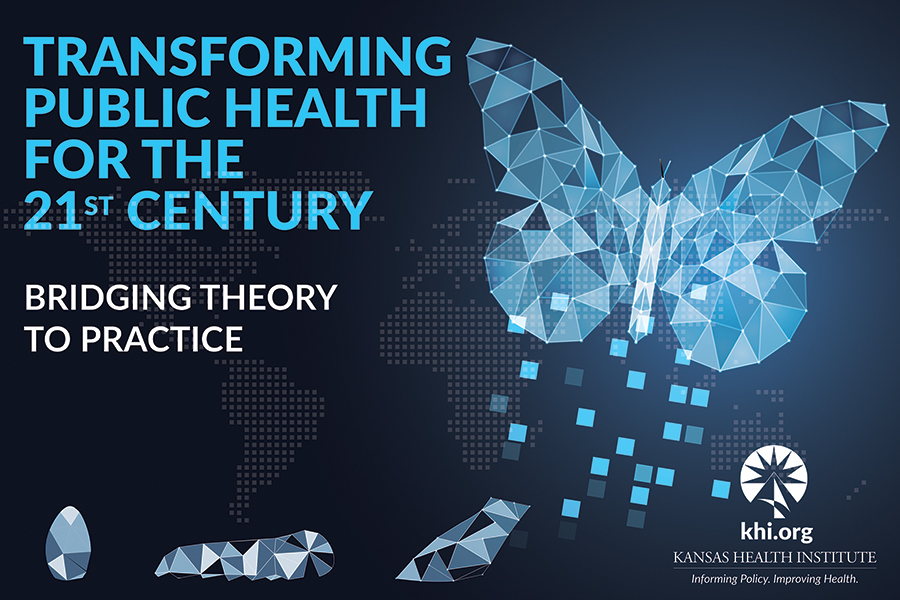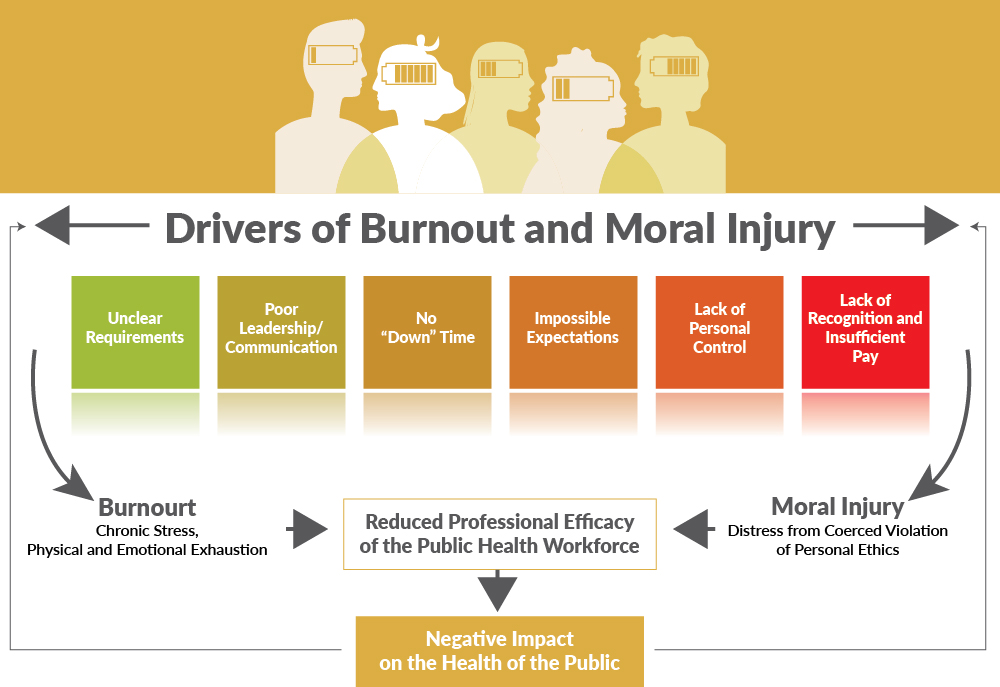“Burnout is a slow, insidious experience. Burnout is not afraid of playing the long game. To prevent burnout, we need to play a long game, too.”
― Sally Clarke, Protect Your Spark: How to Prevent Burnout and Live Authentically

“Burnout is a slow, insidious experience. Burnout is not afraid of playing the long game. To prevent burnout, we need to play a long game, too.”
― Sally Clarke, Protect Your Spark: How to Prevent Burnout and Live Authentically
To safeguard and enhance the health of the public, public health leaders need to cultivate a thriving, dynamic workforce deeply connected to their roles and purpose. At the heart of a high-performing team lies employee engagement — a multidimensional concept encompassing organizational commitment, job satisfaction, alignment with the entity’s mission, and vigor within their professional roles. But how can public health professionals be fully engaged in their work when they are also burning out from the COVID-19 pandemic and other continuing public health crises? In this post, we explore how burnout has affected the public health workforce. In the next post, we will explore how public health leaders can create a culture of well-being across the public health system.
The term “burnout” was coined in the 1970s by psychologist Herbert Freudenberger to describe a combination of behaviors that included emotional depletion, loss of motivation and loss of commitment to ones obligations. In the 11th Revision of the International Classification of Diseases (ICD-11), burnout is defined as “a syndrome resulting from chronic workplace stress that has not been successfully managed.” In addition to burnout, “moral injury” is defined as deep psychological distress from bearing witness to acts that violate your personal ethics. In the public health field, this can result from the inability to meet the needs of your community due to constraints outside of your control. Both burnout and moral injury impact employee well-being and reduce professional efficacy. These issues are more prevalent in human service fields, including public health. Public health professionals may feel hopeless because they believe they cannot do what must be done.
Job factors that produce burnout and moral injury include:
Symptoms of burnout and moral injury include insomnia, worry, anxiety, anger, disconnection, depression, substance abuse and even post-traumatic stress disorder. Burnout manifests differently for different people. Terms like “running on fumes,” “case of the Mondays” or “hitting a wall” may be how someone identifies their burnout. It can be difficult for individuals to recognize their own burnout because it often is brought on by a compounding series of symptoms over time. The combination of burnout and moral injury are leading to compounding stress on the public health system.
In the wake of the COVID-19 pandemic, public health professionals have encountered unprecedented challenges that significantly impact their well-being and career paths. Insights from the Public Health Workforce Interests and Needs Survey (PH-WINS) reveal an escalation in the number of public health professionals who are contemplating departure from their roles in the coming year, excluding retirement (25 percent in 2017 and 27 percent in 2021). Among those who said in 2021 they were intending to leave, 41 percent cited burnout and 37 percent cited stress as a factor in wanting to leave. These figures rose by 18 and 15 percentage points, respectively, from 2017. Further compounding this issue, Leider, Castrucci and colleagues estimated that more than half of the public health workforce may leave by 2025 if nothing is done to change the current trends. The projected rate of departure was greater among public health professionals age 35 or younger. This paints a bleak picture for the future of the public health workforce, which could be marred by issues like “brain drain” and an inability to achieve goals, resulting in greater stress on public health professionals who stay.
Consider what another spike in burnout might look like and the implications for public health capacity if nothing changes. Right now, it is estimated that there is a shortage of 80,000 full-time public health employees needed to carry out the minimum package of public health services. This does not include responding to future public health emergencies or digging in and solving long-standing public health problems, such as worsening life expectancy and growing health disparities.
Burnout in public health is not just something that affects individual professionals. It is a systemic issue across the health system that threatens the ability to develop and maintain a high-functioning public health workforce and, ultimately, endangers the nation’s health. As a systemic threat, burnout needs to be addressed at the public health organization and systems levels. Without making institutional changes, the system will continue to burn out new employees.
While individual factors such as the employee’s role, personality and skills can contribute to burnout, these are not readily amenable to change.
Organizational and systems-level factors that can impact well-being include:
Many of these factors can be improved directly by public health leaders.
Public health plays a unique role in the health care system. The public health discipline “assures the conditions within which people can be healthy.” The burnout crisis in public health prompts us to look at the workforce as the target population. How can proven public health methods be used to address this issue? Public health professionals should not need to sacrifice for their career choice. This issue can be solved. Public health needs a long-term, systems-based strategy to create a culture of well-being across the public health system.
Watch for the next post in this series, which will explore potential solutions to burnout that could lead to a culture of well-being in public health.
Burnout and Moral Injury is a Systemic Issue with Repercussions for the Workforce and Society

Source: Adapted from National Academies of Sciences, Engineering and Medicine, (2019). Taking Action Against Clinician Burnout: A Systems Approach to Professional Well-Being. The National Academies Press. https://doi.org/10.17226/25521.
Andrea McMillin is the Director of Accreditation and Wellness with the University of Kansas School of Medicine in the Office of Graduate Medical Education. Andrea has provided leadership for wellness, including policy, program planning and scholarship. Andrea is focused on ensuring that workers can find balance between personal and professional fulfillment. Andrea is also a student in the University of Kansas Master of Public Health program and is completing her graduate internship with the Kansas Health Institute.
The Kansas Health Institute supports effective policymaking through nonpartisan research, education and engagement. KHI believes evidence-based information, objective analysis and civil dialogue enable policy leaders to be champions for a healthier Kansas. Established in 1995 with a multiyear grant from the Kansas Health Foundation, KHI is a nonprofit, nonpartisan educational organization based in Topeka.